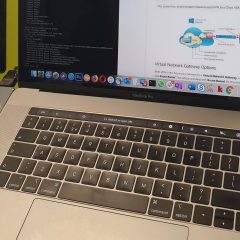EVE-NG Deploying Fortigate v6 Firewalls
KB ID 0001714 Problem The firm I work for are looking at a replacement for Cisco ASA as their preferred firewall of choice. We are looking at Fortinet to fill this gap, but as a product/solution it’s something I know very little about. So the best way to learn is to deploy and play with, and the test bench weapon of choice for discerning technical types is EVE-NG. So can I deploy the newest (v6.4.2 at time of writing) Fortigate...
HP Intelligent Provisioning Cant See USB Media?
KB ID 0001555 Problem Life was simpler when we had DVD Drives and a wallet full of CD/DVDs! I was building an HP DL360 This morning and needed to install Windows. I created a bootable USB with Unetbootin and selected a Windows Server ISO, it wouldn’t boot. So I thought ‘Fine I’ll play the game” I pressed F10 for Intelligent Provisioning. After selecting USB media – the system could not see my USB Drive? ...
Dell iDRAC: ‘Virtual Media is Detached’
KB ID 0001459 Problem I’d needed to present an .iso image to my Dell server and got this; Either Virtual Media is detached or Virtual Media redirection for the selected virtual disk is already in use Solution System > Console Media > Configuration > Virtual Console > Enabled (tick) > Status (Auto Attach) > Save. Related Articles, References, Credits, or External Links...
vSphere – Floppy Drive ‘Won’t Appear’
KB ID 0001020 Problem “It’s 2015 why are you messing around with floppy drives?” I hear you ask! Well for importing certificate requests, and issued certificates from an offline root CA server, it’s still considered best practice to use a virtual floppy drive rather than connect the offline root server to the production network. So today while deploying a PKI infrastructure, I needed to present a floppy drive...
Windows XP – Sysprep (for imaging)
KB ID 0000599 Problem A client who we recently did a WDS (Windows 7) install for, needed to image a couple of Windows XP machines, (They had some software that either would not run, or was not supported on Windows 7). They asked me for some documentation on how to do this, it’s been such a long time since I imaged any XP machine, so I took the opportunity to document it properly. Solution Before you begin, be aware you need to...





